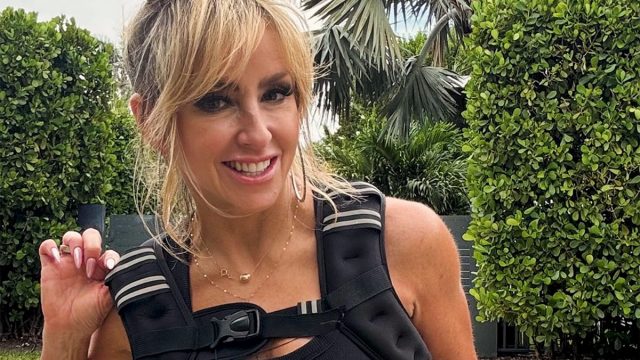She Walked 30 Days With a Weighted Vest and Learned 5 Critical Mistakes
When health and fitness expert Chalene Johnson discovered she had early-stage bone density issues at 47, she turned to weighted vest walking for a solution. But what started as a bone health experiment turned into a journey of unexpected discoveries. After 30 days of testing different approaches, she identified crucial mistakes that could make or break your weighted vest walking routine. Her insights, combined with scientific research, reveal exactly what you need to know before starting this increasingly popular fitness trend.
Mistake 1: Starting Too Heavy
"My first mistake was buying a 30-pound vest because I thought I had a strong core," Chalene admits in her post. "I almost threw my shoulder out, trying to get it on." She learned that weight selection depends more on core strength and comfort than body size. "I think it depends less on your weight and your height and more upon your strength, your core strength, and what's comfortable for you," she says. Most people should start with an 8-pound vest, while those with weaker cores might begin with 5 pounds.
Mistake 2: Rushing Into Long Walks
"The first week that I started wearing it, I noticed that it felt super heavy," Chalene recalls. "I wanted to get it off me as quickly as possible." Instead of immediately taking long walks, she discovered a better approach: "I just wore it around the house and kept checking if 30 minutes had passed." This gradual introduction proved crucial for success.
RELATED: Mom Loses 35 Pounds in 6 Months Using 5 Natural Methods to Lower Cortisol
Mistake 3: Choosing the Wrong Vest Style
"The way that it fits makes a really big difference," Chalene emphasizes. She tried multiple styles before finding the right one. "There are vests that go around your shoulders and buckle across your chest and others where the weighted part is in the middle of your chest." She warns against chest-weighted designs: "I don't find those very comfortable. I think a man made that vest." The key is finding a style that allows proper posture and comfortable movement.
RELATED: She Broke Up with These 5 Bad Habits at 46 and Lost 10 Pounds in 2 Months
Mistake 4: Inconsistent Progression
"By week three, I realized, hey, maybe I just wear this around the house and just try to extend it by maybe 10 minutes each time I wear it," Chalene explains. She found success by wearing it three to four times weekly during everyday activities: "brushing my teeth, maybe doing research, standing up at my working desk." This consistent, gradual approach helped her body adapt properly.
Mistake 5: Ignoring Your Body's Signals
"When my husband and I take a leisurely walk after dinner, we both put on our weighted vests, and we walk slower, which is more enjoyable," Chalene shares. She learned to adjust her expectations and listen to her body. Instead of forcing long walks immediately, she found success in shorter, more frequent sessions. "I feel like the vest pulls my shoulders back, so it improves my posture," she notes, highlighting the importance of paying attention to how your body responds.
The Science Behind the Benefits
Research strongly supports the benefits of weighted vest walking. Studies published in Osteoporosis International show it can significantly improve bone density, particularly in the hips and spine. The Medicine & Science in Sports & Exercise journal found that adding a vest increases calorie burn by 10-15% while maintaining a comfortable walking pace.
Finding Your Sweet Spot
Studies suggest wearing a vest that's 10-20% of your body weight can significantly increase exercise intensity without requiring faster movement. However, as Chalene's experience shows, starting lighter is crucial. The Journal of Strength and Conditioning Research reports significant improvements in lower body strength after just 12 weeks of consistent practice.
RELATED: 10 Signs You're Burning Fat, Not Muscle
Making It a Sustainable Habit
By the end of 30 days, Chalene's perspective completely changed. "It started to feel like a hug," she says. The key to success is gradual progression and consistency. By avoiding these five critical mistakes, you can make weighted vest walking a comfortable, sustainable part of your fitness routine while maximizing its bone-strengthening and calorie-burning benefits.
As Chalene discovered, the goal isn't to challenge yourself to the point of discomfort. Instead, focus on consistent, comfortable progress that allows you to maintain this beneficial practice long-term. And if you enjoyed this article, don't miss 12-3-30 Walking Method: 20 Proven Tips to Lose Weight Faster.





